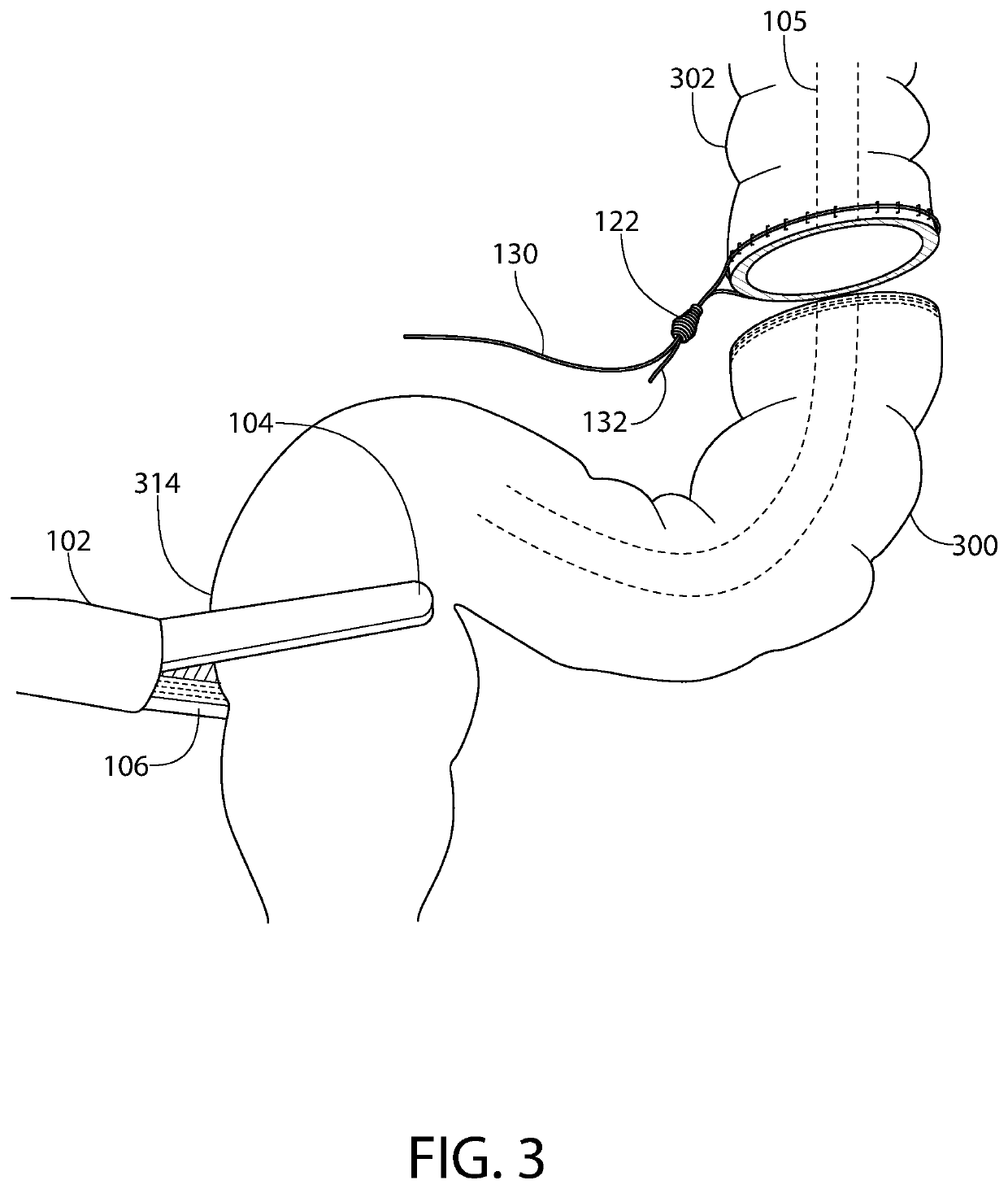Devices and methods for minimally invasive surgical procedures
a surgical procedure and minimally invasive technology, applied in the field of minimally invasive surgical procedures, can solve the problems of increasing the risk of surgical site infections, attempting to overcome cumbersome challenges, and the utilization of additional abdominal wall incisions in the mainstream laparoscopic and robotic techniques, and achieve the effect of increasing the openings
- Summary
- Abstract
- Description
- Claims
- Application Information
AI Technical Summary
Benefits of technology
Problems solved by technology
Method used
Image
Examples
example 1
rifice Intracorporeal Anastomosis with Transrectal Extraction
[0130]The following methods of bowel division and natural orifice intracorporeal anastomosis with transrectal extraction are performed without the use of an abdominal wall incision (only port incisions are used), in a stepwise approach designed for a robotic platform. The following steps are performed once the diseased portion of the bowel has been mobilized and the mesentery of this portion has been divided.
[0131]Step 1: The surgical device 102 (having a suturing mechanism 172 (FIG. 22), cutting mechanism 176 (FIGS. 22 and 26) and stapling mechanism 174 (FIG. 26) as described herein) is placed across the bowel wall at the proposed proximal margin of resection 312 (FIG. 1) and deploys a closed linear staple line across the side of the specimen 300 and attaches a pursestring suture with a slip-knot 122 to the proximal bowel portion 302 (FIG. 2). As an alternative, the bowel is divided by any known method and the suture clip...
PUM
 Login to View More
Login to View More Abstract
Description
Claims
Application Information
 Login to View More
Login to View More - R&D
- Intellectual Property
- Life Sciences
- Materials
- Tech Scout
- Unparalleled Data Quality
- Higher Quality Content
- 60% Fewer Hallucinations
Browse by: Latest US Patents, China's latest patents, Technical Efficacy Thesaurus, Application Domain, Technology Topic, Popular Technical Reports.
© 2025 PatSnap. All rights reserved.Legal|Privacy policy|Modern Slavery Act Transparency Statement|Sitemap|About US| Contact US: help@patsnap.com



